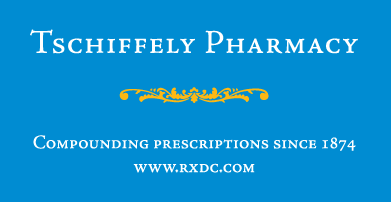
To Buy Cleocin Online Visit Our Pharmacy ↓

The Role of Cleocin in Modern Dermatology
Cleocin, also known as clindamycin, has become a cornerstone in dermatological treatments, particularly due to its efficacy in combating acne. By selectively targeting inflammatory acne-causing bacteria, Cleocin reduces the presence of Propionibacterium acnes, helping to alleviate breakouts and improve skin clarity. However, its role extends beyond acne management. Cleocin's anti-inflammatory and antimicrobial properties make it a versatile tool in dermatology, used in treating various bacterial skin infections, further solidifying its place in modern skin care.
| Cleocin Application | Benefits |
|---|---|
| Acne Treatment | Reduces bacterial presence, improves clarity |
| Other Skin Infections | Antimicrobial action, anti-inflammatory properties |
How Cleocin Effectively Targets Acne Bacteria

Cleocin, known generically as clindamycin, is a powerful ally in the fight against acne, primarily due to its ability to penetrate deeply into the skin and deliver its antibiotic action directly to the source of the problem. Its effectiveness stems from its ability to inhibit bacterial protein synthesis, specifically targeting Propionibacterium acnes, the bacteria responsible for acne's inflammatory response.
The underlying mechanism is both straightforward and highly efficient. Cleocin disrupts the essential processes of bacterial growth, essentially halting the expansion of acne-causing bacteria. This leads to a significant reduction in the bacteria's presence on the skin, thereby decreasing the inflammation and redness associated with acne outbreaks.
Furthermore, Cleocin is adept at reducing the production of free fatty acids in the sebum, which are triggered by bacterial activity. This multifaceted approach not only alleviates existing flare-ups but also prevents future breakouts, establishing Cleocin as a cornerstone in acne management. Its precise targeting makes it a crucial option for individuals seeking an effective treatment to combat persistent acne issues.
Cleocin's Benefits: Beyond Acne Treatment
Cleocin, known for its pivotal role in combating acne, also extends its dermatological benefits far beyond this common skin condition. Its potent antibacterial properties allow it to address a range of bacterial skin infections, providing relief for conditions such as folliculitis and certain types of cellulitis. Furthermore, Cleocin exhibits anti-inflammatory effects, making it beneficial in reducing redness and swelling associated with various skin ailments.
By leveraging the power of Cleocin, dermatologists can manage chronic conditions like hidradenitis suppurativa, a painful condition characterized by inflamed nodules. It can also be advantageous in preparing patients for surgical procedures, reducing bacterial load and risk of postoperative infections. Overall, Cleocin's versatile applications make it an indispensable tool in dermatological therapies beyond just acne management.
Application Methods: Topical Vs. Oral Cleocin

Cleocin offers dermatologists a versatile option in combating acne, whether applied topically or taken orally. Topical Cleocin is often favored for treating mild to moderate acne as it targets directly at the skin's surface, where acne-causing bacteria reside. This method reduces systemic absorption, minimizing broader side effects. In contrast, oral Cleocin is reserved for more severe or resistant cases, as it delivers systemic effects by circulating through the bloodstream to tackle deeper, widespread infections, providing a comprehensive approach to persistent acne issues.
Potential Side Effects and How to Mitigate Them
Using Cleocin in dermatology brings with it a host of benefits, but like any medication, it may present certain side effects. Some of the most observed effects include skin irritation, redness, or dryness when applied topically, while oral forms might lead to gastrointestinal issues such as nausea or diarrhea. Understanding these potential reactions allows patients and healthcare providers to work together to mitigate them effectively.
Mitigating these side effects involves careful adherence to guidelines. For topical Cleocin, it's crucial to start with a patch test to gauge skin sensitivity. Moisturizers can alleviate dryness, and using the medication as prescribed can minimize irritation. In the case of oral Cleocin, taking the medication with meals may help reduce stomach upsets. Staying hydrated and consulting a healthcare professional about any persistent or severe side effects is essential.
```html
| Form | Common Side Effects | Mitigation Tips |
|---|---|---|
| Topical | Irritation, redness, dryness | Patch test, use moisturizer |
| Oral | Nausea, diarrhea | Take with meals, stay hydrated |
Emerging Research and Future Directions for Cleocin
Recent studies are shedding light on Cleocin’s role beyond traditional uses. Scientists are exploring its potential in managing resistant bacterial strains, which is particularly crucial as antibiotic resistance escalates. Research continues to refine Cleocin's formulation to enhance efficacy while minimizing side effects. Innovations in delivery systems, such as nanoparticle-based approaches, promise targeted treatment that might revolutionize acne management. Additionally, investigations into Cleocin's anti-inflammatory properties could unlock new dermatological applications, exemplifying its versatility. As interest grows, the dermatological community eagerly anticipates new findings that could redefine how Cleocin is utilized. For more details, visit: NCBI Article and ScienceDirect.